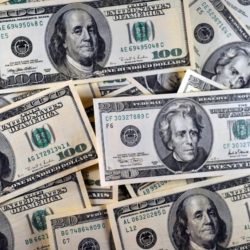Consumers increased spending after slow start to the year
By Eric Morath and Suzanne Kapner
Consumers boosted spending in April to the highest levels in more than a year, accelerating their turn toward online shopping and widening the divide between in-store retailers and Internet outlets pitching lower prices and convenience.
While data from the Commerce Department on Friday showed overall retail sales rose 1.3% in April from a month earlier, the category that includes shopping on Amazon.com Inc. and rival websites and apps grew 2.4%. And in the past year, Internet and catalog sales have grown more than three times as fast as overall sales, up 10.2%. Department-store sales, meanwhile, sank 1.7% over the past 12 months.
Results from the retail sector this past week showed how the shift is knocking down major companies despite resilience in the broader economy. Major retailers including Macy’s Inc., Kohl’s Corp. and Nordstrom Inc. this week reported sharply lower sales and profits, while Gap Inc. said it was considering closing more stores after sales continued to sink.
Amazon is now the second-largest apparel seller in the U.S., behind Wal-Mart Stores Inc., according to Morgan Stanley. That category was once dominated by department stores.
“Just like bookstores and music stores and hardware stores before them, apparel retailers are underestimating how fast Amazon is going to eat their lunch,” said Joel Bines, co-head of consulting firm AlixPartners LLP’s retail practice. “We’ve seen this movie before.”
Executives at traditional large retailers struggled to explain the slump, which for some companies was their worst since the recession. Some pointed to a decrease in mall traffic, while others said shoppers were spending more on items their stores don’t sell such as entertainment, travel and food.
“The consumer was simply spending their hard-earned dollars in experiences, entertainment and to beautify their home,” J.C. Penney Co. Chief Executive Marvin Ellison said Friday after reporting lower-than-expected sales. The chain is responding by adding appliances and other home goods to its stores.
For economists, Friday’s data offered a glimmer of optimism, no matter where the money was being spent. Consumers remain the primary driver of the U.S. economy, accounting for more than two-thirds of economic output. A spending slowdown in the first three months of the year was partly responsible for economic growth nearly stalling, climbing at just a 0.5% seasonally adjusted annual rate.
Economists say April’s spending surge points to faster growth, as measured by gross domestic product, this spring. Forecasting firm Macroeconomic Advisers raised its expectation for second-quarter GDP growth to a 2.3% annualized advance from 2%. Barclays raised its forecast to 2.2% from 2%.
The Federal Reserve Bank of Atlanta’s real-time estimate of economic growth moved Friday to a 2.8% gain, from the prior estimate of 2.2%.
If consumers can spur stronger economic growth in the coming months, that could influence the Federal Reserve’s decision on when to raise its benchmark interest rate. After the Fed in December raised rates from near-zero, a choppy economic performance so far this year has led the central bank to delay a second increase. Policy makers next meet in mid-June.
“With diminished headwinds from abroad and consumers responding to growing household income and wealth, consumer spending should improve over the course of the second quarter,” Boston Fed President Eric Rosengren said Thursday.
Large department stores were once bellwethers of consumer behavior, but there has been a clear and growing divergence in recent years.

Comments are closed